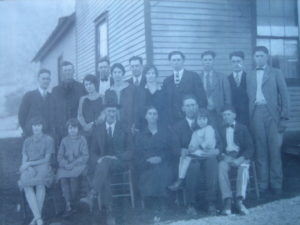(Just a quick update – I am late getting to these notes after the farm-to-farm meetup. My mother, who was in the hospital at the time, was finally discharged a few days ago. She is now doing very well. Thanks for your patience.)
I want to share some links and updates with those who attended the Farm-to-Farm meetup a couple of weeks ago. Here’s a quick review of the materials we discussed. These are the four categories of people who can help you market your farm:
- Sponsors – this is anyone who has a vested interest in seeing that you succeed. An example would be a local business who sponsors the farmers market where you sell. Their ability to participate in the community hinges on your success at the market. What you can do – send a handwritten thank you note to that sponsor, telling them how much their support means to you. They, and their employees, will certainly remember your farm after that.
- Advocates – this is anyone who can publicize your farm business, but may not have direct contact with your end customer. These are great people to network with and to publicize to, even if they don’t buy directly from you. They can change laws, create better access or generally support the farming community. An example of this is your state legislator who is vested in the success of constituent businesses. What you can do – contact your local state legislator and tell them what the regulatory pain points are in your farming business.
- Change Agents – this is someone who can directly influence your potential customer. The best example of this was the one given during farm-to-farm, a Yoga instructor who suggested that her students join the CSA from a specific farm. What you can do – make sure that local businesses know about your farm and what your produce can do to help their customers.
- Targets – these are your direct customers. These are the folks who can grow your business. What you can do – continue reaching for your direct customers and use your advocates and change agents to assist in getting the word out.
Okay, onto the links and other helpful stuff.
Email Managers
These two email managers are the most popular currently in use. They both offer a ton of tools to manage your online marketing. If your customers regularly use email (and people are slowly moving away from doing so as other tools, such as Slack and Teams, are superseding email), these might help you. The differences between them are going to be in the details and the pricing. Take a look.
Text Managers
There are a number of apps that will let you manage your text messages sent to multiple recipients from an Android phone. That isn’t the same for iOS phones, however. I haven’t found much that works on them. However, these are working well for one of my local farms.
- PIDJ – this text and MMS manager works on all phones, since the interface is not dependent on the platform. You text everyone from your computer, not from your phone. I’m not sure how the pricing works, though.
- Sideline – this app, which should work for both iPhone and Android, gives you a second, business phone number, without needing to buy a second phone. It let’s you separate your personal from business texts and calls. There is a charge of $9.99 a month or $99.99 a year. They have a 7-day trial period.
(Quick Note for Laura – The farming database I mentioned, AgBiz Logic, is actually supported by OSU, but is a separate entity. So, you were correct.
AgBiz Logic is a free farm-planning resource that also has components, such as vintner planning tools, that may include a charge. The compelling aspect of this platform is that it can help you with long-term financing, crop planning, climate change and environmental impacts due to the robust big data that backs it up.
(Quick Note for Miles – I’d love to do another workshop. Just call or email me.)
(Notes for Kris – I don’t think I was adequately able to address your two questions. First, an online shopping venue is never really easy, although the prices are coming down. They are intensive to maintain and require both text and graphics. If your products don’t change much, such as CSA boxes, this can work for you. Most web development sites, such as GoDaddy and SquareSpace have shopping components you can add to a site. Ask your current web site hosting company about these.
Second, to compete against a national delivery service, such as Imperfect Produce, you have two main advantages: your produce is perfect and it is local. This means that not only are you giving them very high quality food, the nutrition is going to be much better because you aren’t shipping it across the country. Emphasize that you’re contributing to the local quality of life. You are strengthening the soil and environment locally, which is good for water quality and air quality. Oh, and the taste is so much better, too.
Follow Up
It was so much fun to meet you all at this Farm-to-Farm. I’m sorry I couldn’t stay for the rest of it, but I had to go back to the hospital.
I really want to hear from you. How is your marketing going? Were any of these concepts helpful for you? What frustrations are you encountering? Contact me at geek1@geekinthecountry.com. You can also call or text me at the number on the sheet.


